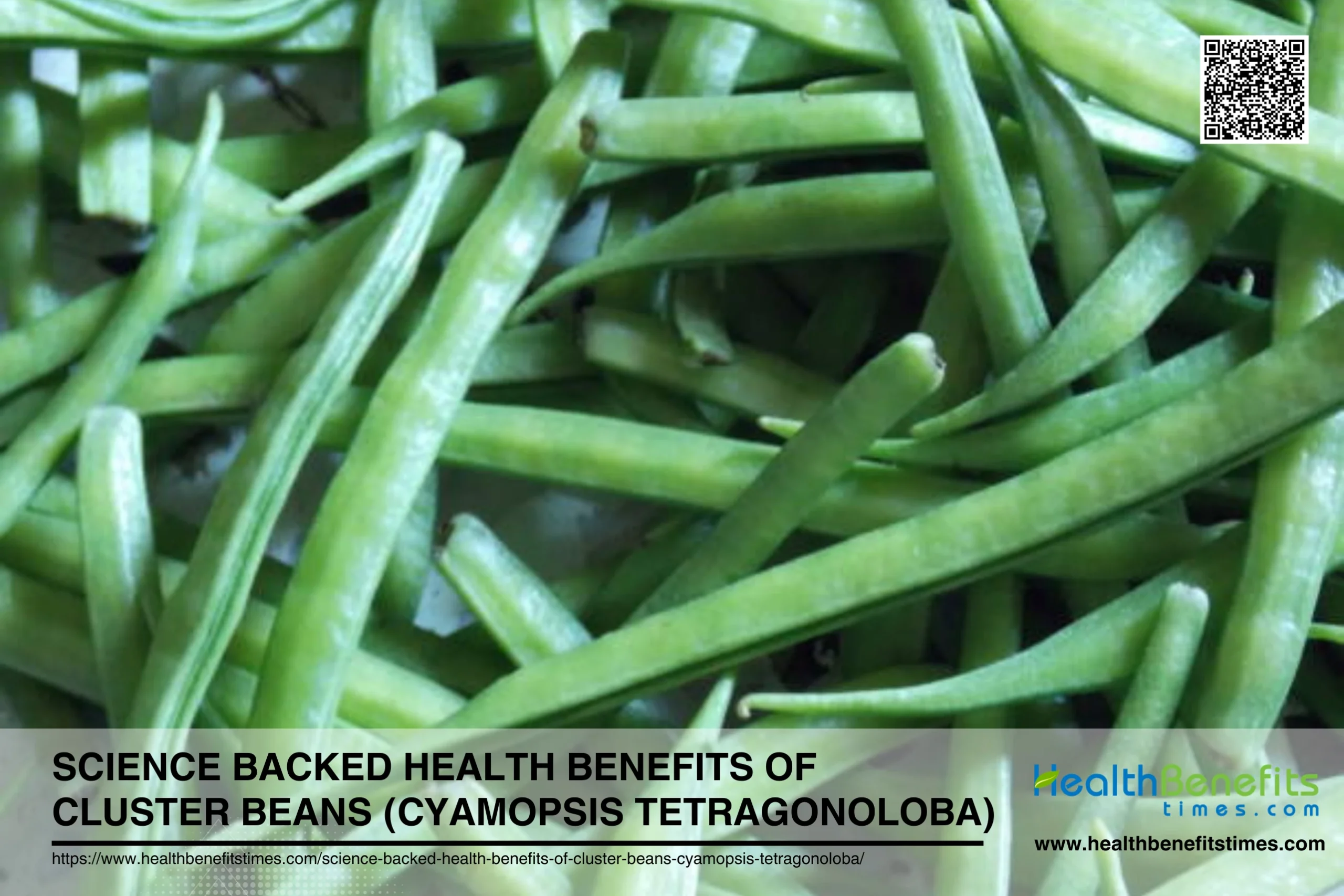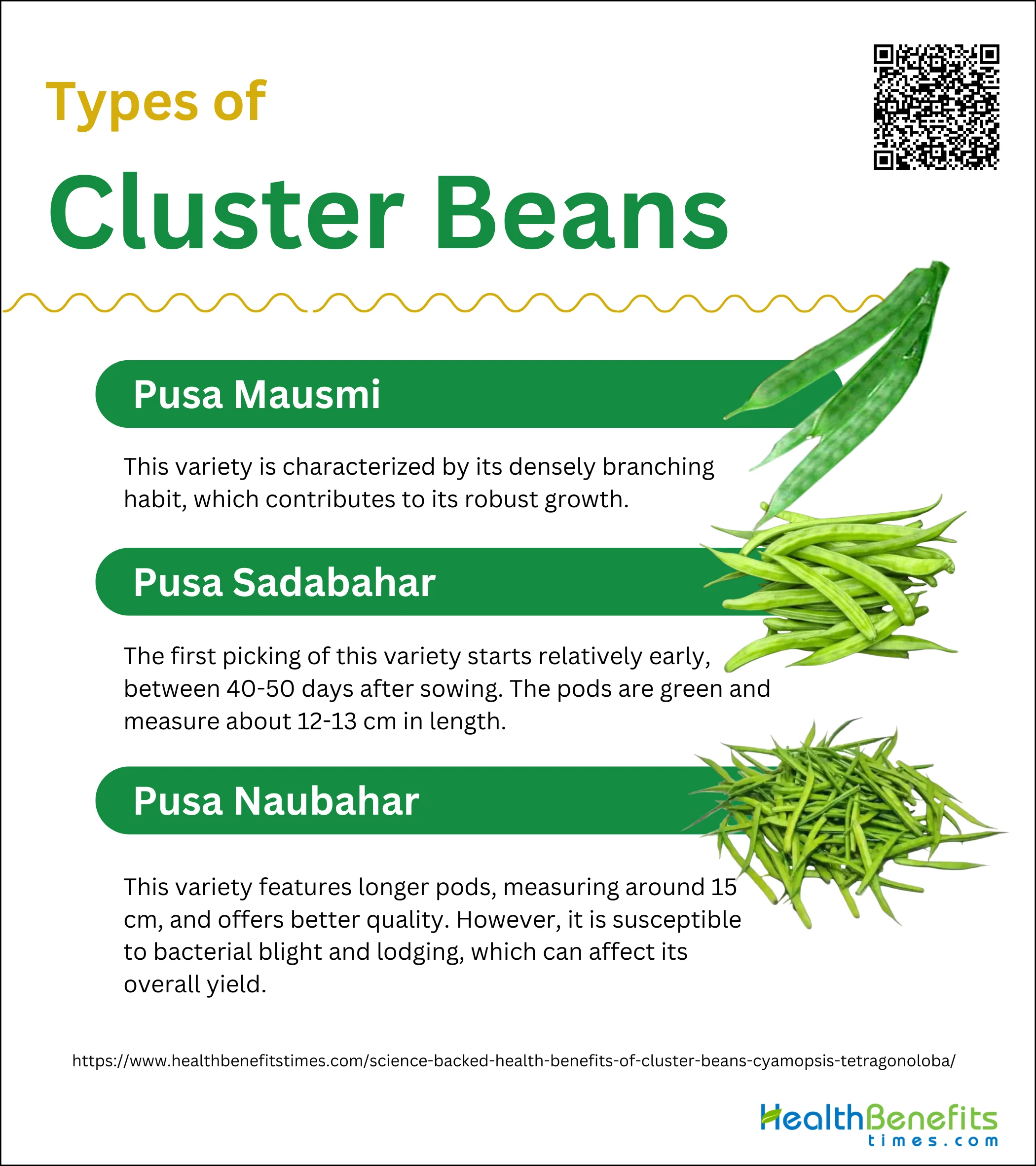 Cluster beans are a highly nutritious legume native to India, celebrated for their myriad of science-backed health benefits. Packed with dietary fiber, protein, and essential vitamins, these beans are a powerhouse of nutrition. Studies have shown that cluster beans can aid in weight management by promoting satiety, support heart health by lowering cholesterol levels, and enhance digestive function through their high fiber content. Additionally, they have been found to regulate blood sugar levels, making them an excellent choice for individuals managing diabetes. Their anti-inflammatory properties and low glycemic index further contribute to their status as a superfood. Incorporating cluster beans into your diet not only adds flavor but also promotes overall well-being, making them a valuable addition to any health-conscious regimen.
Cluster beans are a highly nutritious legume native to India, celebrated for their myriad of science-backed health benefits. Packed with dietary fiber, protein, and essential vitamins, these beans are a powerhouse of nutrition. Studies have shown that cluster beans can aid in weight management by promoting satiety, support heart health by lowering cholesterol levels, and enhance digestive function through their high fiber content. Additionally, they have been found to regulate blood sugar levels, making them an excellent choice for individuals managing diabetes. Their anti-inflammatory properties and low glycemic index further contribute to their status as a superfood. Incorporating cluster beans into your diet not only adds flavor but also promotes overall well-being, making them a valuable addition to any health-conscious regimen.
What is Cluster Beans ?
Cluster beans (Cyamopsis tetragonoloba), also known as guar, are a drought-tolerant annual legume primarily cultivated in arid and semi-arid regions, with India being the leading producer, contributing to around 75-82% of the global production. This versatile crop is valued for its high gum content in the endosperm, making it significant for industrial applications. Cluster beans are also rich in soluble fiber, which has been shown to have cholesterol-lowering effects, particularly beneficial in reducing LDL cholesterol and increasing HDL cholesterol in hypercholesterolemic conditions. The plant exhibits a deep-rooted system, enabling efficient moisture utilization, and is grown for various purposes including vegetable, food, fodder, green manure, and seed production. Genetic diversity studies have revealed a wide range of diversity among cluster bean genotypes, which is crucial for crop improvement and selection. Additionally, the seeds of cluster beans contain significant amounts of fatty acids and micronutrients, with variations observed across different genotypes. The crop’s adaptability to different farming practices, including organic and natural farming, further enhances its agricultural value.
Nutritional Composition of Cluster beans
Cluster beans are a nutritional powerhouse, offering a rich profile of essential nutrients. A 100-gram serving provides approximately 35 kcal of energy, 3 grams of protein, 5.31 grams of carbohydrates, and 0.31 grams of fat. They are also high in dietary fiber, containing about 3.7 grams per serving, which aids in digestion and promotes satiety. Additionally, cluster beans are a good source of vitamins and minerals, including calcium, iron, and vitamins A and C, making them a valuable addition to a balanced diet.
Macronutrients
Cluster beans are particularly noted for their macronutrient content, which includes carbohydrates, proteins, and fats. They contain around 5.31 grams of carbohydrates and 3 grams of protein per 100 grams, with minimal fat content at just 0.31 grams. This balance makes them an excellent choice for those looking to manage their weight or maintain a healthy diet, as they provide essential nutrients without excessive calories or fats.
Protein Content and Quality
The protein content in cluster beans is notable, with approximately 3 grams per 100 grams serving. The protein in cluster beans is of good quality, containing essential amino acids necessary for muscle repair and growth. This makes them a beneficial addition to vegetarian and vegan diets, where protein sources can sometimes be limited. Additionally, the digestibility of these proteins is high, ensuring that the body can efficiently utilize the nutrients provided.
Dietary Fiber Benefits
Cluster beans are rich in dietary fiber, providing about 3.7 grams per 100 grams serving. This high fiber content aids in digestion, helps prevent constipation, and promotes a healthy gut microbiome. Fiber also plays a crucial role in regulating blood sugar levels and lowering cholesterol, making cluster beans beneficial for individuals with diabetes or those looking to improve heart health.
Micronutrients
Vitamins (A, C, K, and B Vitamins)
Cluster beans are packed with essential vitamins, including vitamins A, C, and K, as well as several B vitamins. Vitamin A is vital for maintaining good vision and skin health, while vitamin C boosts the immune system and promotes collagen production. Vitamin K is essential for blood clotting and bone health, and B vitamins support energy metabolism and overall cellular function.
Minerals (Calcium, Iron, Potassium, Magnesium)
Cluster beans are a rich source of several important minerals. They contain approximately 156 mg of calcium and 3.96 mg of iron per 100 grams, which are crucial for bone health and preventing anemia, respectively. They also provide potassium and magnesium, which are essential for maintaining proper muscle function and cardiovascular health.
Phytonutrients
Antioxidants
Cluster beans are rich in antioxidants, which help combat oxidative stress and reduce the risk of chronic diseases. Antioxidants such as vitamins A and C play a significant role in neutralizing free radicals, thereby protecting cells from damage and reducing inflammation. This antioxidant activity contributes to overall health and longevity.
Polyphenols
Polyphenols are another group of beneficial compounds found in cluster beans. These phytonutrients have been shown to possess anti-inflammatory and anti-carcinogenic properties, further enhancing the health benefits of consuming cluster beans. They help in reducing the risk of various chronic diseases, including heart disease and cancer, by protecting the body’s cells from oxidative damage.
Types of Cluster Beans
Cluster beans are a versatile and nutritious legume widely cultivated in various regions. With numerous varieties available, each type offers unique characteristics and benefits, catering to different growing conditions and culinary preferences. From the high-yielding Pusa Mausmi to the resilient MDU 1, these varieties have been developed to enhance productivity, quality, and adaptability. In this article, we explore some of the most popular and significant varieties of cluster beans, highlighting their unique features and why they are favored by farmers and consumers alike.
1. Pusa Mausmi
Pusa Mausmi is a popular variety of cluster beans, specifically selected from local cultivars in North India. This variety is characterized by its densely branching habit, which contributes to its robust growth. The pods of Pusa Mausmi are smooth, bright green, and typically measure 10-13 cm in length. It is well-suited for the rainy season, with the first picking occurring around 80 days after sowing. This variety is known for its high yield and quality pods, making it a preferred choice among farmers.
2. Pusa Sadabahar
Pusa Sadabahar is another well-regarded variety, selected from a local cultivar known as Jaipuri from Rajasthan. Unlike Pusa Mausmi, Pusa Sadabahar is a non-branching type, making it suitable for both rainy and summer seasons. The first picking of this variety starts relatively early, between 40-50 days after sowing. The pods are green and measure about 12-13 cm in length. Its adaptability to different seasons and high-quality pods make it a versatile and reliable choice for cultivation.
3. Pusa Naubahar
Developed by crossing Pusa Mausmi and Pusa Sadabahar, Pusa Naubahar combines the desirable traits of both parent varieties. This variety features longer pods, measuring around 15 cm, and offers better quality. However, it is susceptible to bacterial blight and lodging, which can affect its overall yield. Despite these challenges, Pusa Naubahar remains a popular choice due to its enhanced pod length and quality.
Science backed health benefits of Cluster Beans
Cluster beans have gained recognition for their impressive health benefits backed by scientific research. These legumes are rich in dietary fiber, protein, and essential micronutrients, making them a powerhouse of nutrition. Studies have shown that regular consumption of cluster beans can effectively manage blood sugar levels, lower cholesterol, and enhance overall digestive health. Their anti-inflammatory and antioxidant properties further contribute to a reduced risk of chronic diseases. Including cluster beans in your diet not only adds flavor but also promotes better health and well-being. This article will explore the science-backed health benefits of cluster beans, highlighting why they deserve a prominent place on your plate.
1. Manage cholesterol levels
Cluster beans are highly effective in managing cholesterol levels due to their rich soluble fiber content. Incorporating cluster beans into the diet can significantly lower total cholesterol and LDL (low-density lipoprotein) cholesterol, which is often referred to as “bad” cholesterol. In a study involving rats fed a high-cholesterol diet, the inclusion of freeze-dried cluster beans resulted in a notable decrease in serum cholesterol levels, particularly in the LDL fraction, while also increasing HDL (high-density lipoprotein) cholesterol, the “good” cholesterol. The soluble fiber in cluster beans helps reduce cholesterol absorption in the intestines and promotes the excretion of bile acids, which are made from cholesterol, thereby lowering overall cholesterol levels in the body. This hypocholesterolemic effect makes cluster beans a valuable dietary addition for individuals looking to improve their cardiovascular health.
What Research Says?
- Cluster beans significantly reduce serum cholesterol levels, particularly in the LDL fraction, and increase HDL cholesterol levels in hypercholesterolemic rats.
- Cluster beans lower hepatic cholesterol and triglycerides, and increase bile acid secretion, contributing to a reduction in liver cholesterol concentration.
- The combination of cluster beans with garlic further enhances these effects, leading to a more significant reduction in serum and liver cholesterol
- Cluster beans reduce the formation of cholesterol gallstones and improve the antioxidant status by increasing the concentration of antioxidant molecules and the activity of antioxidant enzymes.
- Cluster beans, especially when combined with capsaicin, decrease weight gain by impeding fat accumulation and enhancing fat excretion in high-fat-fed rats.
2. Promote regular bowel movements

A 100-gram serving of cluster beans provides approximately 3.7 grams of fiber, which is about 15% of the daily recommended intake. This high fiber content aids in digestion by adding bulk to the stool and stimulating peristalsis, the wave-like muscle contractions that move food through the digestive tract. The soluble fiber in cluster beans also acts as a prebiotic, nourishing beneficial gut bacteria and promoting a healthy gut microbiome. Additionally, cluster beans contain a compound called guar gum, which has natural laxative properties and can help alleviate constipation. Regular consumption of cluster beans can help maintain digestive regularity, prevent constipation, and support overall gut health.
What Research Says?
- Guar extract has been shown to inhibit gastric secretion and protect gastric mucosa against various injuries, including those caused by stress and necrotizing agents. It also increases gastric wall mucus and restores nonprotein sulfhydryl content in the stomach, indicating strong cytoprotective properties.
- Guar contains significant amounts of structural carbohydrates, proteins, and minerals, which contribute to its high in vitro digestibility. Genetic manipulation could further enhance its nutritive value, making it a highly digestible and nutritious food source.
- Guar seeds contain trypsin inhibitors, which can diminish the digestive action of stomach enzymes. However, these inhibitors are stable under various conditions and can be influenced by oxidizing and reducing agents, potentially affecting their inhibitory properties.
3. Help Prevents oxidative stress
Cluster beans are effective in preventing oxidative stress due to their high content of antioxidants, particularly phenolic compounds and flavonoids. These bioactive molecules have potent free radical scavenging abilities, which help neutralize harmful oxidative molecules in the body. Studies have shown that extracts from cluster beans significantly enhance the activities of antioxidant enzymes such as superoxide dismutase, catalase, and glutathione peroxidase, which play crucial roles in protecting cells from oxidative damage. Additionally, the antioxidant potential of cluster beans is further boosted when combined with other bioactive compounds, providing a synergistic effect that enhances their protective capabilities.
What Research Says?
- Application of choline chloride (CC) in cluster beans improved growth attributes, photosynthetic pigments, and activities of antioxidant compounds, reducing oxidative stress indicators like H2O2 and malondialdehyde (MDA) under salinity stress.
- Sulfur supplementation in cluster beans under heat stress increased antioxidant enzyme activities (superoxide dismutase (SOD) and catalase (CAT)), as well as ascorbate and glutathione content, thereby mitigating oxidative damage.
- Consumption of tender cluster beans elevated ascorbic acid and glutathione concentrations and stimulated antioxidant enzyme activities in both blood and liver of hypercholesterolemic rats, indicating a strong antioxidant influence.
4. Beneficial for Cardiovascular Health
Cluster beans are highly beneficial for cardiovascular health, thanks to their rich nutritional profile and heart-friendly properties. They are an excellent source of dietary fiber, particularly soluble fiber, which helps lower LDL (low-density lipoprotein) cholesterol levels, thereby reducing the risk of atherosclerosis and heart disease. The beans are also rich in potassium, a mineral essential for maintaining healthy blood pressure by counteracting the effects of sodium and relaxing blood vessel walls. Additionally, the presence of antioxidants such as flavonoids and phenolic compounds in cluster beans helps combat oxidative stress, which is a significant factor in the development of cardiovascular diseases. These antioxidants protect the heart by reducing inflammation and preventing the oxidation of cholesterol, further promoting arterial health.
What Research Says?
- The consumption of cluster beans, especially when combined with capsaicin, leads to a reduction in weight gain in high-fat-fed rats. This is achieved by impeding fat accumulation in adipose tissue and enhancing fat excretion. The combination of cluster beans and capsaicin also increases the activity of enzymes involved in lipolysis, further aiding in weight management.
- Cluster beans significantly reduce cholesterol levels in hypercholesterolemic conditions. This effect is attributed to the presence of guar gum and neutral detergent fiber in the beans, which lower both blood and liver cholesterol concentrations.
5. Help in Diabetes Management

Cluster beans have emerged as a powerful ally in diabetes management, thanks to their unique nutritional profile and beneficial properties. These beans boast a low glycemic index and high fiber content, which work synergistically to regulate blood glucose levels. The soluble fiber in cluster beans forms a gel-like substance in the digestive tract, slowing down the absorption of sugar and preventing rapid spikes in blood glucose after meals. Regular consumption of cluster beans can significantly improve insulin sensitivity and enhance overall glycemic control. Additionally, cluster beans contain bioactive compounds such as polyphenols and flavonoids, which have been found to have hypoglycemic effects, further aiding in blood sugar management. The presence of these phytochemicals not only helps lower blood sugar levels but also improves overall metabolic health.
What Research Says?
- The methanol extract of Cyamopsis tetragonoloba beans improved insulin sensitivity and reduced insulin resistance in high-fat diet and streptozotocin-induced diabetic rats.
- Both methanol and aqueous extracts of Cyamopsis tetragonoloba beans significantly lowered blood glucose levels in diabetic rats.
6. Beneficial for Weight Management
These legumes are low in calories but high in dietary fiber, providing about 3.7 grams of fiber per 100 grams serving. This high fiber content promotes satiety, helping individuals feel fuller for longer periods and potentially reducing overall calorie intake. Additionally, cluster beans have a low glycemic index, which helps regulate blood sugar levels and prevent sudden spikes and crashes that can lead to overeating. Incorporating cluster beans into a high-fat diet can significantly reduce weight gain in animals. The soluble fiber in cluster beans may also interfere with fat absorption in the digestive tract, further supporting weight loss efforts. Moreover, the protein content in cluster beans, though modest at about 3 grams per 100 grams, contributes to muscle maintenance during weight loss.
What Research Says?
- Cluster beans significantly reduce weight gain in high-fat-fed rats by decreasing fat accumulation in adipose tissue and enhancing fat excretion.
- Cluster beans have a hypolipidemic effect, lowering both total cholesterol and triglycerides in the liver and plasma.
- The presence of polyphenols such as gallic acid and caffeic acid in cluster beans contributes to their lipid-lowering properties.
Incorporating Cluster Beans into Your Diet
Cluster beans are a versatile and nutritious legume that can be easily incorporated into your diet. Rich in fiber, protein, and essential nutrients, these beans can be added to various dishes to boost their nutritional value. Try adding them to stir-fries, curries, or salads for a crunchy texture and nutty flavor. For those new to cluster beans, start with small amounts and gradually increase your intake to allow your digestive system to adjust to the high fiber content.

Culinary Uses
Cluster beans are widely used in Indian cuisine and can be prepared in numerous ways. They can be sautéed with spices for a simple side dish, added to curries for extra nutrition, or included in soups and stews for a hearty meal. Their slightly bitter taste complements other vegetables well, making them an excellent addition to mixed vegetable dishes. For a quick and healthy snack, try blanching cluster beans and tossing them with lemon juice and spices.
Traditional recipes and modern twists
Traditional recipes often feature cluster beans in spicy curries or dry sabzi preparations. In North Indian cuisine, they are commonly cooked with potatoes and spices, while South Indian recipes may include them in sambar or rasam. For a modern twist, try incorporating cluster beans into fusion dishes like stir-fried cluster beans with garlic and soy sauce, or add them to quinoa salads for a protein-packed meal. Their unique texture and flavor can add interest to a variety of contemporary recipes.
Tips for cooking and preparation
When preparing cluster beans, look for young, tender pods that are bright green in color. Trim the ends and remove any tough strings before cooking. To reduce their bitterness, blanch them briefly in boiling water before adding them to your recipe. For optimal nutrition and flavor, avoid overcooking cluster beans as this can lead to nutrient loss and a mushy texture. Sautéing or stir-frying are excellent cooking methods that preserve their crunch and nutritional value.
Supplementation
Cluster bean supplements, often in the form of guar gum powder, are available for those looking to harness the health benefits of this legume in a concentrated form. These supplements are typically used as a thickening agent in food products and may also be taken for their potential digestive and blood sugar management benefits. However, it’s important to note that whole cluster beans provide a wider range of nutrients and fiber compared to isolated supplements.
Availability of cluster bean supplements
Cluster bean supplements, particularly guar gum powder, are widely available in health food stores, online marketplaces, and some pharmacies. They come in various forms, including capsules, tablets, and powders. When purchasing supplements, look for products from reputable manufacturers that have undergone third-party testing for quality and purity. It’s also worth noting that whole cluster beans are readily available in many grocery stores, especially those specializing in Indian or Asian foods.
Benefits and considerations
Cluster bean supplements may offer benefits such as improved digestion, blood sugar control, and cholesterol management. The high fiber content of guar gum can promote feelings of fullness, potentially aiding in weight management. However, it’s crucial to consult with a healthcare professional before starting any supplement regimen, especially if you have existing health conditions or are taking medications. Start with small doses to assess tolerance, as excessive intake can lead to digestive discomfort. Remember that while supplements can be beneficial, they should not replace a balanced diet rich in whole foods.
Side effects of Cluster bean
Cluster beans are a popular vegetable known for their nutritional benefits and versatility in cooking. However, like many healthy foods, they come with their own set of potential side effects. While they are packed with fiber, vitamins, and minerals, consuming them in large quantities or without proper preparation can lead to various health issues. From digestive discomfort to potential allergic reactions, it’s important to be aware of these side effects to enjoy cluster beans safely. In this article, we will explore the different side effects of cluster beans, helping you make informed dietary choices.
Flatulence and Abdominal Discomfort
One of the primary side effects of consuming cluster beans is flatulence. This occurs because cluster beans are rich in dietary fiber, which can produce gas as it is broken down in the digestive system. For individuals who are not accustomed to a high-fiber diet, this can lead to significant discomfort and pain in the abdomen. The excessive gas can cause bloating and a feeling of fullness, which might be particularly uncomfortable for some people.
Diarrhea and Loose Stools
Overconsumption of cluster beans can lead to diarrhea or loose stools. The high fiber content in these beans can accelerate bowel movements, resulting in frequent and watery stools. This side effect is more likely to occur if cluster beans are consumed in large quantities or if one’s body is not used to processing such high levels of fiber. It is essential to introduce fiber-rich foods gradually into the diet to avoid such gastrointestinal issues.
Constipation
Ironically, while cluster beans can cause diarrhea in some people, they can also lead to constipation in others. This is because the fiber in cluster beans requires adequate water intake to aid in digestion and bowel movements. Without sufficient hydration, the fiber can harden and create blockages in the intestines, leading to constipation. Therefore, it is crucial to drink plenty of water when consuming high-fiber foods like cluster beans.
Intestinal Blockage
In severe cases, particularly for individuals with pre-existing digestive conditions such as Crohn’s disease, the fiber in cluster beans can cause intestinal blockage. This occurs when the fiber swells and forms a mass that obstructs the intestines. Symptoms of an intestinal blockage include severe abdominal pain, vomiting, and an inability to pass gas or stools. Immediate medical attention is required if these symptoms occur.
Reduced Blood Sugar Levels
Cluster beans have a low glycemic index, which means they can help regulate blood sugar levels. However, for individuals who are already managing their blood sugar levels through medication or other dietary means, consuming large amounts of cluster beans can cause blood sugar levels to drop too low. This can lead to symptoms such as dizziness, weakness, and confusion. It is essential for diabetic patients to monitor their blood sugar levels closely when incorporating cluster beans into their diet.
Allergic Reactions
Although rare, some individuals may experience allergic reactions to cluster beans. Symptoms of an allergic reaction can include itching, swelling, hives, and in severe cases, anaphylaxis. It is important to be aware of any adverse reactions when consuming cluster beans for the first time and to seek medical advice if any symptoms of an allergy occur.
Nutrient Absorption Issues
Consuming large quantities of cluster beans can interfere with the absorption of certain nutrients. The high fiber content can bind to minerals like calcium, iron, and zinc, reducing their bioavailability and absorption in the body. This can potentially lead to deficiencies over time if cluster beans are consumed excessively without a balanced diet.
Conclusion
In conclusion, cluster beans offer a wide array of science-backed health benefits, making them a valuable addition to a balanced diet. From managing cholesterol levels and promoting regular bowel movements to preventing oxidative stress and supporting cardiovascular health, these versatile legumes pack a powerful nutritional punch. Their role in diabetes management and weight control further underscores their importance in maintaining overall health. While cluster beans can be easily incorporated into various dishes and are available as supplements, it’s crucial to be mindful of potential side effects, especially when consumed in large quantities. By introducing cluster beans gradually into your diet and staying hydrated, you can harness their numerous health benefits while minimizing any digestive discomfort. As with any dietary change, it’s always wise to consult with a healthcare professional, particularly if you have existing health conditions or are taking medications.
ADDITIONAL RESOURCES
Here is a list of US organizations related to research on beans and seeds, along with their short descriptions and URLs:
1. American Pulse Association (APA)
APA promotes the health, nutrition, and sustainability benefits of pulses (beans, lentils, chickpeas, and dry peas) through research, education, and marketing.
An educational resource provided by the Northarvest Bean Growers Association, focusing on the nutritional benefits, research, and culinary uses of beans.
3. US Dry Bean Council (USDBC)
The USDBC supports the dry bean industry by promoting the benefits of beans through research, education, and market development both domestically and internationally.
4. The International Food Information Council (IFIC)
IFIC provides science-based information on health, nutrition, and food safety, including research on the benefits and uses of beans and seeds.
5. The North American Millers’ Association (NAMA)
NAMA represents the interests of millers and promotes research on the health benefits and culinary uses of grains, beans, and seeds.
Recommendations for books on Cluster Beans
Here are some book recommendations on the research of Cluster Beans (Guar):
1. “Cluster Bean (Guar): A Multipurpose Leguminous Crop“ by D.K. Maheshwari
This book provides a comprehensive overview of the biology, cultivation, and uses of cluster beans, with a focus on their agricultural and industrial applications.
2. “The Guar Industry: Prospects and Challenges“ edited by B. S. Dhillon, K. Singh, and A. S. Kahlon
This book covers various aspects of the guar industry, including the agronomic practices, industrial uses, and economic importance of cluster beans.
3. “Advances in Agronomy: Volume 163“ edited by D. L. Sparks
This volume includes a chapter dedicated to the agronomy and genetic improvement of cluster beans, offering the latest research findings and advancements.
FAQS
- What are the primary nutritional components of cluster beans?
Cluster beans are rich in dietary fiber, protein, and essential vitamins and minerals such as vitamins A, C, calcium, and iron. They are low in calories and fat, making them a nutritious addition to any diet.
- How do cluster beans help in managing diabetes?
Cluster beans have a low glycemic index, which helps in regulating blood sugar levels. The soluble fiber in these beans slows down the absorption of glucose, thereby preventing spikes and crashes in blood sugar levels, making them beneficial for individuals managing diabetes.
- Can cluster beans improve heart health?
Yes, cluster beans can improve heart health by lowering cholesterol levels and regulating blood pressure. The high fiber content helps reduce LDL (bad cholesterol) and increase HDL (good cholesterol), thus reducing the risk of heart disease and stroke.
- Are cluster beans beneficial for digestive health?
Cluster beans are excellent for digestive health due to their high fiber content. They help increase bowel movements, relieve constipation, and remove toxins from the body. Additionally, they can strengthen the gut mucosal barrier, protecting against stomach ulcers and inflammation.
- Do cluster beans aid in weight management?
Yes, cluster beans can aid in weight management. Their high fiber and protein content promote satiety, keeping you fuller for longer periods and reducing overall calorie intake. This makes them a great choice for those looking to maintain or lose weight.
- How do cluster beans support bone health?
Cluster beans are rich in calcium and phosphorus, essential minerals for bone strength and health. Regular consumption can help in bolstering bone density and reducing the risk of osteoporosis and other bone-related issues.
- Can cluster beans improve skin health?
Cluster beans contain vitamins A and C, which are beneficial for skin health. Vitamin C promotes collagen production, helping to maintain healthy skin, reduce wrinkles, and prevent premature aging. The antioxidants in cluster beans also protect the skin from damage caused by free radicals.
- Are there any benefits of consuming cluster beans during pregnancy?
Cluster beans are beneficial during pregnancy due to their high content of iron, calcium, and folic acid. These nutrients are crucial for the healthy development of the fetus and can help prevent birth defects and other pregnancy-related health issues.
- Do cluster beans have antimicrobial properties?
Yes, cluster beans have shown antimicrobial activity against several pathogenic bacteria, including Salmonella typhimurium and Escherichia coli. This indicates their potential use in preventing and treating microbial infections with further research.
- Can cluster beans help in wound healing?
Cluster bean extract has been shown to positively impact wound healing by promoting healing and increasing tensile strength. The anti-inflammatory properties of the extract also help reduce inflammation, accelerating the wound-healing process.



